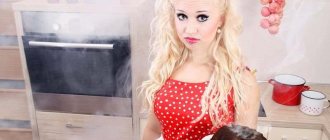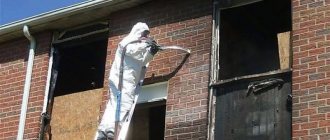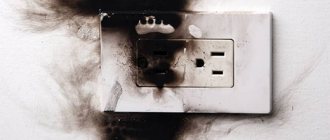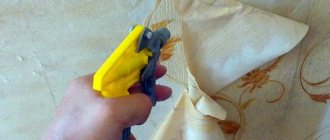A fire is not a pleasant situation. In addition to causing damage to your property and spending money on restoring repairs and buying new furniture, you will also have to thoroughly clean the room and remove traces and the smell of burning. To make this procedure easier, it is worth getting acquainted with the stages and specifics of cleaning after a fire.
To effectively remove burning from furniture and other objects after a fire, use only a suitable product. To achieve high-quality cleaning results, you need to follow consistent instructions, since each surface is cleaned of soot and soot differently.
Stages of apartment processing
To avoid more contamination of things and furniture, clean the room in stages. This will not only prevent additional damage, but also more comfortably get rid of burning and soot.
We take things out
Before cleaning after a fire, immediately clear the room of furniture and belongings. If the weather is good, take everything outside. It doesn’t matter what exactly was damaged by the fire - furniture, decorative items or household appliances, after the fire all things will smell like burning, so they must be taken out into the air and thoroughly ventilated.
We remove curtains, clean drywall, carpets, baseboards
Fabrics and wool absorb odor best, so you need to get rid of them first. Remove all window textiles and wash several times.
The smell of burning and soot is well absorbed into wallpaper, baseboards and drywall, so it is better to immediately dismantle these elements from the room affected by the fire.
Getting rid of garbage
After a fire, many things turn into garbage, which also needs to be thrown away. When removing linoleum and other materials, small debris will appear. Get rid of anything that will interfere with cleaning the room. Also remember to remove paint and wallpaper from walls and ceilings.
Dry cleaning
Use a vacuum cleaner or broom to remove dust and soot from the floor, walls and ceiling. Never use wet rags, otherwise you will simply smear dirt across the surface. The best option would be to use a vacuum cleaner with a nozzle with a tapered spout.
Cleaning the ceiling and walls
After a fire, clumps of soot hang from the ceilings. If they are removed with a rag or mop, they can leave stains on the surface that will be very difficult to remove in the future. Take a vacuum cleaner and carefully remove any dirt that has accumulated on top. Alternatively, you can use a spatula or scraper.
How to remove odor
First, open all windows and doors to allow toxic fumes and gases to escape. Then carefully examine all areas of the room that were affected by the fire. Wipe windows, glass, hatches and doors, since even a small amount of soot can spoil the air in the entire apartment.
There are many ways you can remove the burning smell from a room after a fire. You can purchase a special product in the store or use a folk recipe. A humidifier or air purifier will also be an effective assistant. If the device works around the clock, the unpleasant aroma will disappear in a few days.
In everyday life, people use various solutions consisting of vinegar, alcohol, soap or cinnamon.
Cost of specialist services
If you cannot clean the room on your own after a fire, you need to hire specialists for help. They have professional cleaning products, tools and equipment in their arsenal to completely eliminate the consequences of a fire.
After professional cleaning of the room, the burning smell will be completely neutralized; it will not remind you of itself after a few days, as often happens when using household chemicals.
Finding a team is not difficult . Cleaning companies advertise on the Internet and in newspapers. It is better to entrust the cleaning to a large organization that has good reviews and recommendations.
The average price for cleaning a room after a fire starts from 200 rubles per square meter. The final price will be announced after assessing the volume of work to be done.
Necessary equipment
In addition to protective equipment, you will need the following items to clean your house after a fire:
- vacuum cleaner;
- broom and dustpan;
- hard brushes;
- garbage bags and sacks;
- sealant;
- wet rags;
- roller, spray or brush;
- scraper or spatula.
Prepare the necessary equipment in advance so as not to be distracted from work later.
FAQ
How much does it cost to travel outside the Moscow Ring Road?
In our company, the manager’s visit to the site is free, in Moscow within 10 km from the Moscow Ring Road.
Who is responsible for the quality of cleaning at the site, is there a written guarantee?
The quality of cleaning after renovation is controlled by a senior manager, there is a guarantee.
What's included in the price?
Labor, tools and materials are included in the cleaning price
I need urgent help with cleaning, can you advise me?
Yes, call us, we will try to help.
Call now and get a discount on this service!
Remedies for burning and soot
To remove soot and soot stains, you can use special chemicals or make a solution yourself.
Chemicals
Domestos does a good job of cleaning soot. This product will not only effectively clean your apartment of soot, but will also disinfect it, also removing unpleasant odors. It is not recommended to use budget products, since they can only harm the surface by absorbing fumes into it.
Substances at hand
You can use various materials at hand for cleaning:
- The room can be cleaned with soapy water. This folk remedy effectively removes stains and eliminates odors. Just dissolve soap in water at the rate of 1 tbsp. spoon of the substance per 1 liter of liquid, and process.
- Dishwashing detergent does a good job of removing soot marks. Pour 5-7 liters of warm water into a bucket and add 1 tbsp. spoon of the substance, stir thoroughly until foam forms and treat all surfaces that need cleaning with the solution.
- Use ammonia and vinegar to clean surfaces. Dissolve 2 tbsp. tablespoons of ammonia and the same amount of vinegar in 5 liters of water and treat surfaces contaminated with soot with the solution.
- To remove traces of soot, soak a napkin or gauze in an alcohol solution and wipe the surface of the walls. Refined gasoline can also be used in a similar way.
- Dissolve 1 tbsp. spoon of soda ash in 1 liter of water and treat surfaces smeared with soot and soot several times with the resulting composition.
- To eliminate odor, use a special solution. Please note that the solution recipe contains hydrochloric acid, so protect yourself first. Mix ammonia and soda in equal quantities, and then add the same amount of hydrochloric acid to the mixture. During the reaction, white smoke will be released, which can eliminate the burning smell. Leave the product in the room, close the windows tightly and leave the room for a day. After exposure, the unpleasant odor should disappear.
Precautionary measures
When cleaning up after a fire, you need to follow some rules:
- Work in a ventilated room with open windows.
- When cleaning walls and other surfaces, a large number of small particles are released into the air, which are dangerous for the respiratory system. Therefore, you need to work with a respirator.
- Clothes are as closed as possible.
- The air in the room should be humid. To do this, you can periodically spray water from a spray bottle.
- When working, use safety glasses, gloves, and cover your hair with a headscarf.
Ready set after a fire
The advantage of such sets is their universal action. In addition to effectively washing away burning and soot, the product quickly removes unpleasant odors and poisons after a fire. However, during the cleaning procedure of the room, you need to close all windows and doors, otherwise the substance will simply disappear.
Many preparations differ in their use: some are diluted to form foam, while others can be used in the form in which you bought them. Therefore, before cleaning the apartment, carefully read the instructions for use and follow the recommendations.
General recommendations
When using any chemical, you must follow basic safety rules - protect your respiratory system with a respirator, and the skin of your hands with clothing, long sleeves and thick gloves. Otherwise, there is a risk of irritation or burns. It is recommended to further protect the mucous membrane of the eyes by wearing glasses.
When treating the ceiling or upper parts of walls, it is worth protecting your hair and scalp by wearing a hat. Before using a finished chemical, be sure to study the instructions and treat only those surfaces for which they are intended.
Professional compounds for removing soot and soot
Not all professional kits are effective against burning and soot after a fire. Let's look at the most popular companies that have established themselves as manufacturers of high-quality products for cleaning apartments from soot and unpleasant odors.
Facade cleaner No. 2
The product effectively copes with fumes on metal, brick and concrete surfaces. The extract is mixed in a proportion of 100-200 ml per 1 liter of water. Apply the mixture to contaminated areas of the façade and rinse off with clean water after 10 minutes. The procedure will require a roller, sprayer or brush.
"Pure Deso"
The substance is intended to remove burning odors after a fire. Mix 2 mg of Chist Dezo with 10 liters of water and apply to the surface. The peculiarity of the drug is the process of removing unpleasant odors. If analogues are distilled by replacing their own smell, then the “Chist Dezo” composition destroys the molecules, as a result of which the burning smell simply disappears.
The drug can also be used to remove stench from upholstered furniture, wood, wallpaper and other interior elements.
Mazbit+
The concentrate is intended for removing soot from the facade areas of the house. The special feature of Mazbit+ is its composition, which copes well with soot. The standard proportions with water are 1/3, but for severe contamination, the dose can be increased to 1/1.
Mazbit+ does not contain explosive elements, but it does contain alkalis. In this regard, before use, put on rubber gloves, a raincoat and a hat. In case of contact with eyes, rinse immediately with clean water.
BZ 20
The purpose of the product is to clean kitchen stoves, ovens, stoves, fryers, ventilation systems and pipelines on a domestic and industrial scale. BZ 20 contains powerful alkalis that quickly remove all fatty contaminants. The concentrate can also be used to remove soot from kitchen furniture and walls after a fire. It is used as standard: spray on the contaminated area and after 15 minutes rinse with water and a brush.
"Bitumaz"
An equally effective analogue of BZ 20, the main purpose of which is to remove greasy stains and smoke from kitchen furniture, concrete and brick walls, as well as hoods. Bitumaz contains strong alkalis, so it is recommended to use it only in protective equipment. Mix the concentrate with water in proportions of 1/7, but in varying degrees of contamination you can independently combine the substance with water.
Soot and soot cleaner SYNTILOR Fuoco
The concentrate does not contain toxic chemicals, mercury or other metals, so it can be used in any environment, the main thing is to protect yourself from alkalis. The product is universal, so it can be used both on upholstered furniture and on concrete walls. Mix with water in a ratio of 1/3, after spraying, wash off with clean water.
We recommend
DOCKER MAZBIT PLUS is a concentrated product for cleaning surfaces from the effects of fire. Designed for effective quick cleaning of any surfaces (wood, concrete, plaster, stone, tiles) from various contaminations by combustion products, such as soot, soot, carbon deposits. Without smell. Does not contain chlorine or acid.
More details
Cleaning up after a fire How to clean soot from metal
Cleaning from burning various surfaces
Various materials suffer from soot and soot. It is worth noting that the same method will be effective for one type of surface and absolutely useless for others. In order for the procedure to give the best result, study how various materials behave under the influence of certain substances.
Metal
To clean metal surfaces, use highly concentrated solutions or acids. It is enough to simply treat the contaminated area with the product, and then wash off any remaining dirt with a damp sponge. Be careful, chemicals such as acids or gasoline can cause allergic reactions on the skin and mucous membranes. To prevent this, protect yourself before cleaning.
Abrasive substances based on river sand or crushed bricks also work well with smoke and soot. Add a little water to the dry mixture and apply the resulting slurry to the surface with a sponge. Rub a little and then remove any remaining substances with a wet cloth.
Plastic
Plastic actively absorbs dirt and unpleasant odors, so try to clean plastic surfaces first. To avoid leaving scratches on the coating, first carry out dry cleaning, and only then proceed with wet cleaning.
Use special substances for plastic, dishwashing liquid or an alcohol solution for cleaning. Apply detergent to the surface with a sponge and rinse with water. Repeat the procedure if necessary.
Tree
Wood surfaces are very difficult to care for, so cleaning them from burning and soot can only be done with an integrated approach.
For the best effect, first treat the wooden surface with a dry cleaning method using a broom or vacuum cleaner. This will help prevent soot from penetrating into the structure of the material. Next, carefully rub the coating with sandpaper. When most of the stains have been removed, apply a special wood cleaner and leave for the time specified in the instructions to act. Afterwards, thoroughly wipe the surface with a damp sponge.
Glass
Soot and soot may leave dark stains on the glass. To prevent this, try to wash windows and mirror surfaces as quickly as possible. A vinegar solution works well for cleaning glass. Dilute 1 tbsp. l into 1 liter of water and pour into a container with a spray bottle. Spray the resulting liquid onto the surface and leave for 30 minutes. After the allotted time has passed, rinse off the solution with a sponge soaked in warm water and wipe the glass dry with a dry cloth.
Laminate
You can remove traces of soot and soot from the laminate using kerosene, technical ethyl alcohol or solvent. Simply soak a cloth in the substance and thoroughly treat the surface. Do not forget that the substances used can harm the skin and mucous membranes, so take care of ways to protect the skin and respiratory system.
Water-based paint
Before washing walls or ceilings painted with water-based paint, keep in mind that most substances can harm the painted surface. Solutions of technical or medical alcohol are considered harmless means for cleaning painted walls and ceilings. Dampen a clean rag or gauze in the substance and treat the surface.
Brick
Regular table vinegar is best suited for removing soot from bricks. Be sure to dry clean before processing. Pre-mix vinegar and water in equal proportions. Apply the liquid generously to the surface and carefully wipe off the dirt with a brush.
Textile
It is better to wash textiles by hand, otherwise after washing in the machine a black residue may remain on the drum. To clean textiles, you can use regular washing powder in combination with citric acid. Mix the ingredients in equal proportions and dissolve in water. Soak the product in the solution for half an hour, and then rinse thoroughly with running water.
How to wash vegetable oil (+ sunflower oil)
Most often you have to wash off vegetable oil either from a tile sleeve or from clothing. For the first case, ideal:
- Baking soda is a natural product, not as harsh as a regular cleaning product. A small amount is applied to a damp sponge, after which it is rubbed into the surface with circular movements.
- Any fat solvent - usually sold with a spray bottle.
To remove oil stains from clothes, you can use time-tested methods.
If oil is spilled on the floor:
- Use a dry sponge to collect any remaining residue.
- Make a soap solution - it is advisable to use ordinary laundry soap.
- Wipe the floor with a mop.
It must be remembered that the sooner measures are taken, the more reliable the result.
If oil gets on your clothes, the main thing is to immediately begin removing it. An old oil stain is almost impossible to remove.
What to do:
- Add a few drops of detergent to the stain. Then put it in the washing machine.
- Sprinkle salt on the stain - this option is suitable for those who are outdoors or in a cafe. The salt will absorb most of the oil, after which the clothes can be washed with a little addition of regular soap.
Salt can effectively solve many everyday problems.
It is better to remove oil from white things using starch. A small amount is added to the stain, after which the item is washed in a soap solution. It is better to do this before the oil is completely absorbed and dries.
They sprinkle the dirt in dry form and wait for some time.
How to clean burning plastic windows
Cleaning plastic windows is carried out in several stages.
First of all, carry out dry processing and remove traces of soot with a broom or vacuum cleaner.
Next, start cleaning the glass. Use available and purchased substances suitable for such purposes, for example, a vinegar solution or store-bought window cleaning spray.
At the last stage of cleaning, move on to the plastic parts. They can also be cleaned using window cleaning liquid or a solution based on available products, such as soda or alcohol.
Cleaning the walls in the bathhouse
Most often, those objects where there is a constant thermal load are exposed to soot and soot. It is not so easy to wash them off. You can remove soot from wood using one of the following methods:
- Mechanical. Wood perfectly absorbs odors, so in order to completely remove soot or soot, you need to completely scrape it off with any hard object or sanding machine.
- Another way to remove soot from walls is to create a cleansing scrub designed for treating wooden surfaces. It may be based on sand or crushed brick. It should be mixed with a small amount of water, and the resulting slurry should be used to clean the damaged surfaces.
- Another way to wash soot in a bathhouse is to use ready-made products. It is necessary to purchase only those household chemicals that are suitable for treating the internal surfaces of baths. Most often, they contain alkaline substances. They are not absorbed into wood and will begin to affect the human respiratory system when heated.
Getting rid of soot can be difficult. In addition, during the cleaning process you can damage the walls, floor or ceiling, and it will be almost impossible to get rid of the resulting defects. Do not allow soot to appear. To do this, you need to wipe the surfaces with soap and water after each visit to the bathhouse or sauna.
How to remove soot and soot from clothes
You can stain your clothes with soot not only when cleaning up after a fire, but also when cleaning a fireplace or stove. There are many proven methods for treating clothes from soot and soot using available means.
The most effective substances are considered:
- Kerosene. Before use, check how the substance affects the material in an inconspicuous area of the product. If all is well, carry out cleaning without fear. Use a cotton sponge and soaked in kerosene to treat problem areas. If the dirt is deeply embedded in the fibers, leave the substance on the surface for 10–15 minutes. After treatment, rinse the item with running water and wash it in a machine.
- Acetone. As with kerosene, check the effect of acetone on the fabric before the procedure. Soak a cotton pad in the substance and wipe away the soot stains. After cleaning, wash off the dirt in a solution of laundry soap, rinse the product and wash it in the usual way.
- White spirit or gasoline. The effect of such substances is also initially tested on an inconspicuous area. Apply solvent to a rag and gently work away the soot marks. Immediately rinse the treated area with warm water. Evaluate the result and repeat the procedure if necessary. After the stains are gone, wash the item.
- Turpentine and egg. For the procedure you will need one egg yolk and 1 tbsp. spoon of turpentine. Beat the yolk into a thick foam and add the substance. Apply the resulting mixture to problem areas and leave for 15 minutes to act. Rinse off any remaining turpentine with running water, and then put the product in the washing machine.
- Soda, vinegar, dishwashing liquid. Mix the ingredients in equal proportions and apply to the soot marks. Wait 10 minutes and rinse off any remaining substances with warm water. After this, wash the product by hand or in a machine.
- Butter. This method is only suitable for materials that can withstand washing in hot water. Apply a piece of butter to the soot stains and wait until it completely softens the fibers. After 20 minutes, wash the product in hot water. Repeat washing if necessary.
- Bread. Try scrubbing off minor fresh stains with bread crumbs preheated in the oven. Roll it into a small ball and treat the stains. If necessary, repeat cleaning, and then wash the item as usual.
You can also use store-bought stain removers for cleaning. The main thing is to make sure that they are suitable for the type of fabric, and also always first study the instructions for use and dosage on the packaging.
How to remove burning smell from clothes?
Clothes can become saturated with smoke not only from a fire, but also from a fire, stove or fireplace. To remove burning smell from clothes, follow these tips and recommendations:
- Wash strong-smelling items separately from other clothes.
- Before washing, pack the items in a bag and sprinkle thoroughly with baking soda. Seal the container tightly and wait at least 2 hours. The soda will absorb the unpleasant odor and, as a result, the clothes will be washed better.
- Use fabric softener. Alternatively, you can pour a little table vinegar into the conditioner dispenser. The effect will be the same.
- Use a steam cleaner to remove odors from outer clothing. Alternatively, you can also fill the bathtub with hot water and hang your jacket directly over the steam for a few hours.
- Before washing, you can soak the items in a solution of ammonia, preparing it from 50 liters of ammonia and 5 liters of warm water. For a better effect, you can add 100 g of laundry soap shavings to the soaking mixture.
Dry your clothes outside and, if possible, leave them in this position for several days.
How to purify the air
In a smoky apartment or house, the smell of burning lingers for a long time. After cleaning, you should try to get rid of it.
Special means to combat odor after a fire
You can eliminate the smell after smoke or fire using different means:
- Place a pan of water on the fire and pour vinegar into it. For 3 liters of water you need 1 liter of acid. After boiling, leave the heat on low and keep the container for 2 hours.
- Whole coffee beans or ground powder are scattered onto saucers and left for a day in the apartment rooms.
- Throw pieces of lemon and orange into the water and boil for 10-15 minutes. You can set fire to the dry peel of any citrus.
- Boiling cloves will also remove the smell.
- The salt solution (10 tablespoons per liter of water) is left overnight indoors.
- Fresh herbs of sage, mint, wormwood, spruce branches, pine trees are laid out on paper. As the herbs dry, the strong burning smell will be replaced by a pleasant aroma.
See also
25 ways to clean your toilet yourself at home
You can safely choose any method. If the cleaning is done correctly, then over time there will be no consequences from the fire.
Using an ozonizer
The fumes are removed using a special device that treats the premises with ozone gas. Rooms are cleaned within 3-10 hours. Before the procedure, indoor flowers are taken out and pets are removed. It is better to turn on the device after wet cleaning. It is strictly prohibited to be in the room while the ozonator is operating. A large amount of ozone will cause disturbances in the functioning of the human respiratory system.
Precautions when cleaning an apartment after a fire
The main thing in the process of cleaning after a fire is to protect yourself, since toxic substances in fire residues, and even cleaning chemicals, can be harmful to health.
Take precautions, namely:
- clean with rubber gloves so as not to damage the epidermis;
- When cleaning, a lot of debris will fall from the ceiling, so wear a hat;
- clean only with a gauze or medical bandage to avoid breathing toxic fumes;
- put on old clothes and throw a raincoat on top;
- ventilate the room well;
- increase the humidity in the room.
If you are not confident in your abilities or cannot devote enough time to cleaning, it is better to use the services of a cleaning service.
Cleaning up after a fire is not an easy task. To increase the speed and efficiency of room treatment, follow the sequence of actions and use only substances suitable for various surfaces. With the right approach, you can restore an attractive appearance to a burnt room.
Helpful information
Tips to help clean up a room after a fire:
Movement between rooms should be limited as much as possible. If the fire did not affect any rooms, they need to be isolated. This will prevent soot from spreading throughout the apartment.- During cleaning, you must ensure the cleanliness of equipment. If it gets dirty, soot will cover clean surfaces.
- It will not be possible to avoid walking to the bath and back; in order not to spread dirt, you need to lay old sheets and towels on the floor.
- When cleaning, we must not forget about indoor plants, which were also damaged by the fire. They are watered and the leaves are wiped with a damp cloth on both sides.
- The air duct and air conditioner filters need to be replaced.
Security measures
When cleaning an apartment after a fire, you need to follow some rules. Rules during cleaning, by following which you can prevent the occurrence of dangerous situations:
- The room should be well ventilated. This is due to the fact that when cleaning soot from the ceiling and walls, a large number of soot particles float in the air. Ventilation relieves various diseases of the respiratory tract and lungs.
- The body must be protected with clothing. This should include long sleeves, pants and closed shoes.
- Air humidity should be increased. This can be achieved using a humidifier or hanging wet rags (towels).
- The face is protected with goggles and a protective mask, hands with gloves.
When getting rid of soot that appears after a fire, you need to use chemicals or traditional methods. In addition, you can use the services of a cleaning service.
Cleaning things up
Housing restoration efforts should begin by clearing the premises of things that were damaged during the fire.
- Throw away items that cannot be recovered. Most likely, you will have to get rid of the books because they retain a burning smell for several years.
- Ventilate upholstered furniture and carpets.
- Throw curtains, curtains, bed linen, and clothes into the washing machine. If a burning smell remains on your items after washing, take them to the dry cleaner.
- Using a broom, scrape up any shards and pieces of damaged items from the floor and place them in a trash bag.
- Carefully remove cracked glass from window frames and doorways.
- Remove food from the refrigerator, unplug the appliance, and leave it open.
- Remove surviving plants from the room and wipe their leaves with a damp cloth.
- Change the ventilation filter and place two layers of gauze on the outlet grilles.
If some things are soldered to the floor covering, you cannot do without the help of professionals. You should also not attempt to clean lighting fixtures yourself.
Eliminate odor
Cleaning an apartment after a fire is completed after getting rid of the corrosive smell. To do this, first of all, get rid of damaged furnishings, as well as elements that strongly absorb the burning smell. The latter include linoleum, plastic and plasterboard parts, upholstered furniture, books, etc. Furniture can be sent for restoration or reupholstery, windows and floor coverings can be replaced. Books and magazines must be thrown away; they cannot be cleaned. Then they wash off the soot from the walls, floor and ceiling. And only the third stage is air purification.
The best remedy is an ozone generator (ozonator). It can be rented or purchased. But there is already a lot of spending after a fire. A cheaper method is to “fumigate” the room for 24 hours with ammonium chloride, which is obtained from a mixture of equal portions of soda, ammonia and hydrochloric acid. Another option is to hang sheets soaked in a solution of water and vinegar in the room and boil the water on the stove for half a day. You can use a humidifier. The final touch is thorough ventilation.











